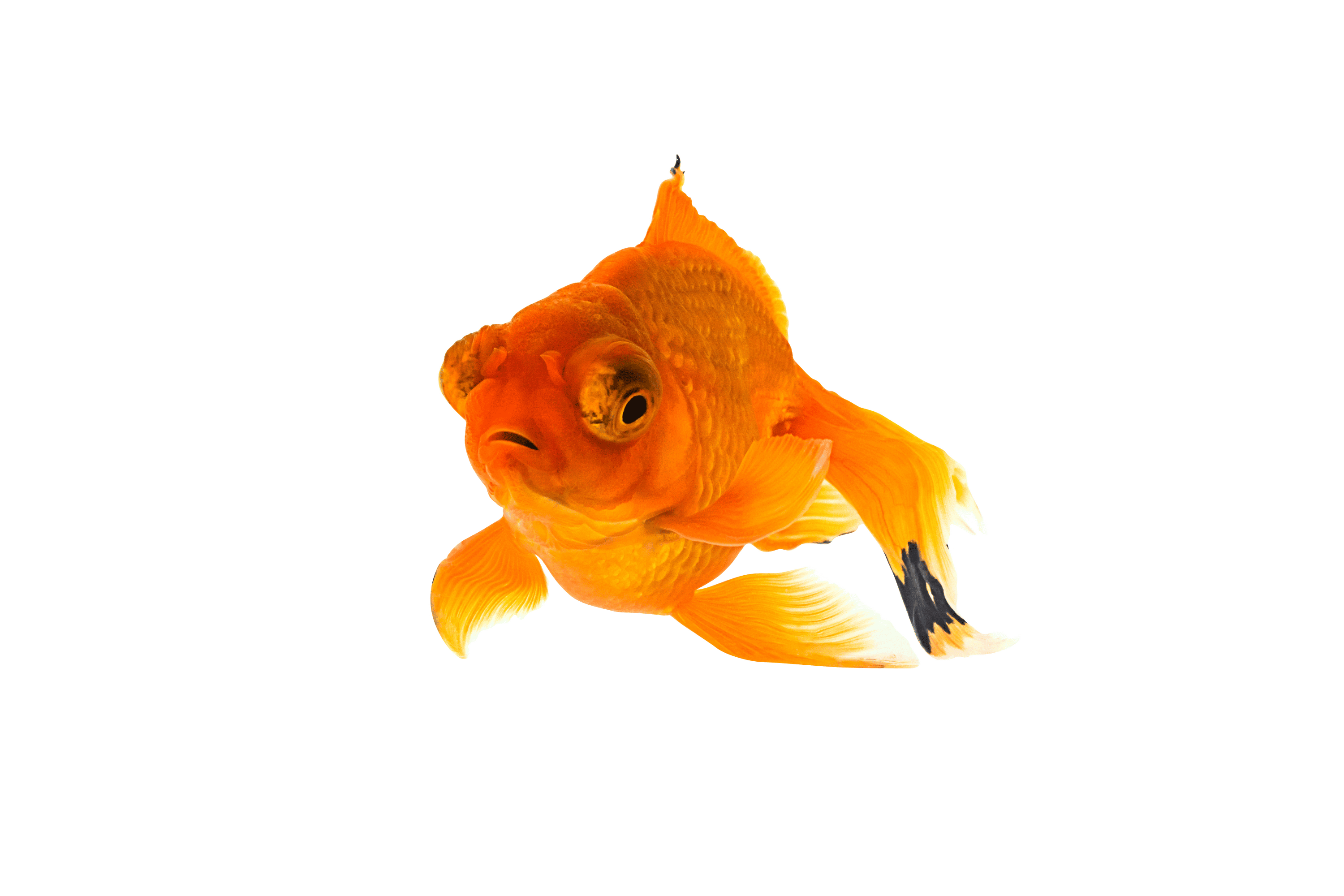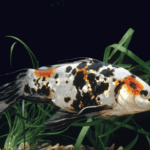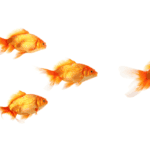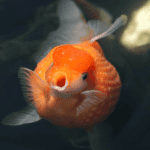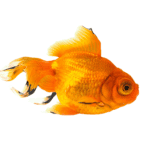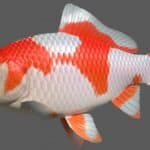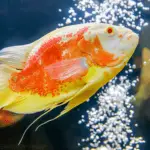Telescope goldfish, scientifically known as Carassius auratus, are an eye-catching and unique variant of the common goldfish. They are distinguished by their large, protruding eyes that are positioned within telescopic stalks, giving them the appearance of a telescope. Along with their exceptional eyes, these fish are known for their gracefully flowing fins and vibrant colors, making them a popular choice among aquarium enthusiasts and fishkeepers.
In the wild, telescope goldfish are found in slow-moving and stagnant waters, so it is crucial to replicate these conditions in your aquarium or pond to ensure their health and longevity. These aquatic pets typically have a lifespan of 10 to 15 years, although some goldfish can live for over 20 years with proper care. To maintain a healthy environment, start with a minimum 20- to 30-gallon tank for a single telescope goldfish and add 10 gallons per additional fish you house with them.
Besides their mesmerizing appearance, telescope goldfish require diligent care and attention in order to thrive. By understanding their specific needs and unique characteristics, fishkeepers can ensure a vibrant, thriving aquarium and a long, healthy life for their telescope goldfish companions.
Origins and History
Telescope goldfish, a variant of Carassius auratus, are believed to have been first bred in China in the early 1700s. They descend from wild Prussian carp, which were developed in ancient China and have played a significant role in global aquaculture. These fancy goldfish feature distinctive, protruding eyes that set them apart from other goldfish varieties.
In the 1500s, telescope goldfish were traded in Japan, where they became known as Demekin. The black moor, a popular black-colored variant of the telescope goldfish, is thought to have originated from China in the 1400s. The name “moor” refers to the black North African Muslim inhabitants of Al-Andalus, providing a glimpse of the rich cultural history associated with this variant.
Telescope goldfish are closely related to other fancy goldfish, such as the veiltail. The veiltail originated in the United States in the 1890s, when a Japanese-bred fringetail ryukin goldfish was crossed with a telescope eye goldfish. This creative breeding process highlights the international exchange of knowledge and techniques that has contributed to the development and diversification of goldfish breeds.
The butterfly telescope goldfish is another variant, known for its beautiful and unique appearance. It is a variation of the Moor or Telescope fantail goldfish, which were once called Dragonfish or Dragon Eye goldfish. Today, all Telescope Eye goldfish are recognized for their charming and distinct features, making them a favorite among aquarists worldwide.
In summary, the origins and history of Telescope goldfish can be traced back to ancient China, where they were developed from wild Prussian carp. From China, their popularity spread to Japan and eventually around the world. Throughout the centuries, various Telescope goldfish variants have been developed, all bearing the trademark protruding eyes that make this breed truly stand out.
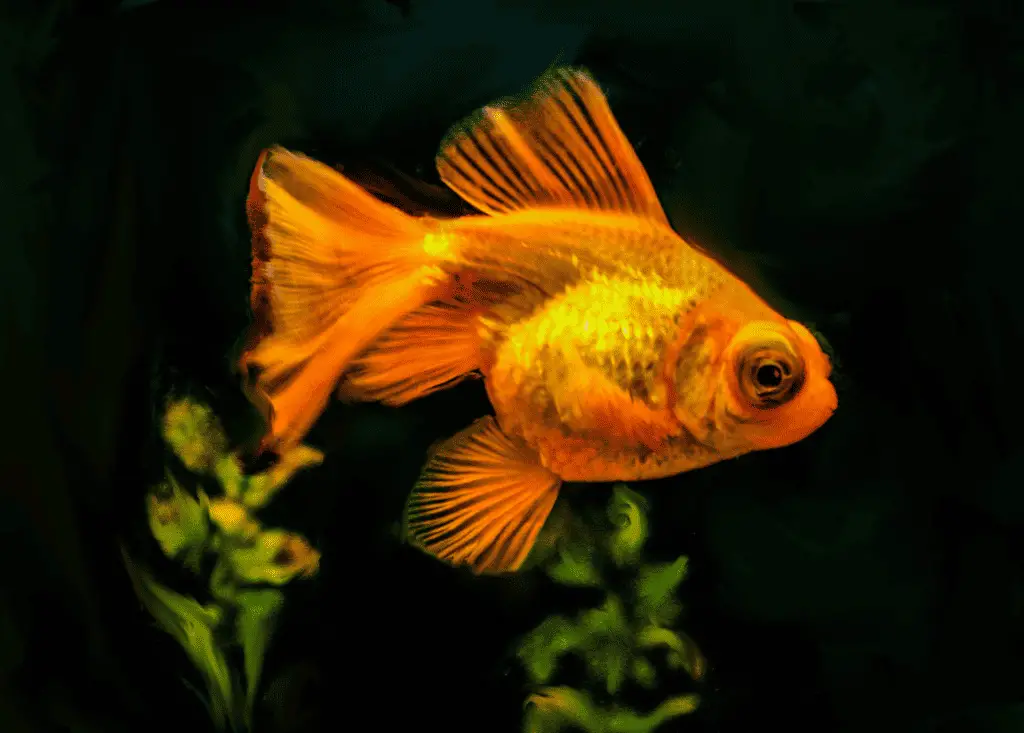
Appearance and Types
Colors and Patterns
Telescope goldfish exhibit a variety of colors and patterns, making them visually appealing in an aquarium setting. Some common color variations include:
- Red: Vibrant red coloration
- Blue: A rare blue hue with a metallic sheen
- Calico: Combination of red, blue, and white with a nacreous (iridescent) or matte (non-shiny) scale finish
- Chocolate: Rich brown color with hints of metallic or matte scales
- Metallic: Shiny gold or silver scales that give a metallic appearance
- Nacreous: Iridescent scales with a blend of various colors
- Matte: Non-shiny scales, appearing more natural and less reflective
Immature telescope goldfish may be dark brown or black in color, and their patterns will become more defined as they mature.
Eye Variations
Telescope goldfish are known for their unique eye variations. Several types of telescopic eyes are observed in these fancy goldfish:
- Protruding Eyes: Eyes that bulge outwards from the head
- Stalks: Eyes that are on extended stalks away from the head
- Dragon Eye: Featuring eyes that resemble those of dragons in Chinese paintings
- Celestial: Eyes that point upwards towards the sky
- Bubble Eye Goldfish: Eyes exhibiting fluid-filled sacs beneath them
- Telescope Eye: Eyes that are significantly larger and more protruded compared to other goldfish varieties
- Panda Telescope: A black moor sub-variety with black pigmentation around the eyes, resembling panda bears
In addition to color and eye variation, the telescope goldfish can come in different tail fin styles, such as the broadtail and globe eye goldfish. Broadtail telescope goldfish have wide, distinctively shaped tail fins, while globe eye goldfish have protruding eyes and a more elongated tail fin.
Telescope goldfish can also be bi-colored, showcasing a combination of two colors, or tri-colored, displaying a mix of three colors, adding to the diverse range of appearance possibilities for this unique fish species.
Size and Life Expectancy
Telescope goldfish, also known as Carassius auratus, are a variant of the popular goldfish with unique and stunning features, including bubbled eyes. When it comes to size, these fish can grow to be 6-8 inches long at their maximum size. They usually require a minimum tank size of 10 gallons in captivity, but it is better to provide a 20-30 gallon tank for optimal growth and health.
A well-planned tank setup is important for telescope goldfish. Consider using a medium to large-sized gravel substrate, as this type of substrate is especially suitable for telescope goldfish tanks. It is also essential to maintain the water temperature within an appropriate range to reduce stress and ensure the well-being of your precious pets.
Factors like tank size, water quality, and diet all play a critical role in determining the lifespan of telescope goldfish. On average, Butterfly Telescope fancy goldfish have a lifespan of 10 to 15 years. However, with high-quality care, a proper diet, and a well-maintained environment, their lifespan can exceed 20 years.
In summary, to provide the best environment for your telescope goldfish, keep these considerations in mind:
- Tank size: 20-30 gallons minimum for optimum growth
- Substrate: Medium to large-sized gravel
- Temperature: Maintain consistent water temperature to reduce stress
With proper care and attention, telescope goldfish can thrive and live a long, healthy life.
Behavior and Compatibility
Telescope Goldfish are a variety of Fancy Goldfish known for their unique appearance with protruding, telescopic eyes. They are freshwater fish that exhibit calm and social behavior, making them suitable for community tanks.
These peaceful fish enjoy scavenging for leftover food in the tank and tend to be quite active. Due to their poor eyesight, they may require more time to locate their food. It is essential to provide them with tank mates that have a similar temperament and won’t compete aggressively for food.
Some fellow Fancy Goldfish varieties that make good tank mates include Lionhead, Ryukin, and Black Moor. These goldfish types share similar body shapes and behavioral traits, complementing the Telescope Goldfish nicely.
When planning a community tank with Telescope Goldfish and other compatible fish, consider the following points:
- Choose tank mates that are non-aggressive and have similar swimming speeds to avoid stress and competition for food.
- Avoid housing Telescope Goldfish with fast-swimming or sharp-finned species that may accidentally injure their delicate eyes.
- Ensure there is enough space in the tank, as overcrowding can lead to health issues and unfavorable water conditions.
In summary, Telescope Goldfish are calm, social fish suitable for community tanks with fellow Fancy Goldfish varieties and other non-aggressive, slow-swimming species. Their peaceful behavior and compatibility with similar fish make them a popular choice for aquarium enthusiasts.
Housing and Water Parameters
Telescope Goldfish are beautiful freshwater fish known for their distinct, protruding eyes. These fish can be housed in a variety of environments such as ponds, lakes, and rectangular tanks. It is crucial, however, to provide them with appropriate conditions to ensure their health and well-being.
Tank Size and Shape
A suitable tank size for a single Telescope Goldfish is around 20 to 30 gallons, with an additional 10 gallons per additional goldfish in the tank. As coldwater species, they do not require a water heater. However, it is important to maintain stable water temperatures between 65°F and 72°F for their optimal health.
Water Parameters and Quality
Maintaining optimal water quality is essential for the welfare of your Telescope Goldfish. Here are the recommended water parameters:
- pH: 6.0 to 8.0
- Water hardness: 5 to 19 dKH
- Ammonia: 0 ppm (parts per million)
- Nitrite: 0 ppm
- Nitrate: below 40 ppm
Filtration and Aeration
A reliable biological filtration system is key to maintaining a healthy aquarium environment. These systems help remove harmful substances such as ammonia and nitrite, allowing for a safe community aquarium. Additionally, proper aeration promotes oxygen exchange and ensures that your goldfish have sufficient oxygen to thrive.
Habitat and Tank Mates
Telescope Goldfish can live harmoniously with other non-aggressive tank mates, such as other fancy goldfish varieties. It is advisable, though, to avoid housing these delicate fish with more robust goldfish strains, which may outcompete them for food and space. Always monitor their interactions and separate them if needed to maintain a harmonious aquarium.
By following these guidelines on housing and water parameters, you will be well on your way to providing a suitable and thriving environment for your Telescope Goldfish.
Diet and Feeding
Telescope Goldfish are omnivores, which means they consume a variety of foods. Their diet should consist of a balanced combination of fresh live food, frozen food, and fish food flakes. This diverse diet provides the necessary nutrients to keep them healthy and thriving in a freshwater aquarium.
When it comes to fresh live food options, telescope goldfish enjoy indulging in brine shrimp, daphnia, and bloodworms. Live food not only contributes to their nutrition but also adds a natural element to their feeding behavior, stimulating their senses and instincts within the aquarium environment.
As for frozen food, it is a convenient and safe alternative to live food, as it greatly reduces the risk of introducing parasites or pathogens to the aquarium. You can offer frozen brine shrimp, mysis shrimp, or even frozen bloodworms, just make sure to properly thaw the food before feeding.
Fish food flakes and pellets should not be neglected, as these products are specifically formulated to meet the nutritional needs of aquarium fish. Opt for high-quality goldfish flakes or pellets that are designed for their unique physiology and contain essential vitamins and minerals.
Feeding your Telescope Goldfish should follow a regular schedule, with multiple smaller meals throughout the day. This is better than one large meal, as it allows for optimal nutrient absorption and digestion. Also, be mindful of overfeeding, as it can lead to obesity and deteriorating water quality.
In summary, a varied diet of fresh live food, frozen food, and flakes or pellets, combined with a well-planned feeding schedule, will greatly contribute to the overall health and well-being of your Telescope Goldfish, ensuring they add visual interest and beauty to your freshwater aquarium for years to come.
Health and Disease
Telescope goldfish are known for their unique appearance, but they are also prone to certain health issues. Some of the most common diseases affecting telescope goldfish include:
- Ich: A parasite that causes white spots on the fish’s body, fins, and gills.
- Swim bladder: A disorder that affects the fish’s ability to maintain balance and buoyancy.
- Dropsy: A bacterial infection causing swelling in the body due to fluid retention.
- External parasites: Microorganisms such as anchor worms or fish lice can attach to the fish’s body and cause irritation or infection.
Poor vision is a common issue with telescope goldfish due to their protruding eyes. They are more susceptible to injuries and may struggle to find food. Ensure that their tank has no sharp or dangerous objects that can harm them.
Beginner aquarists should also be aware of the specific needs of telescope goldfish. They require a well-maintained freshwater environment and a high-quality diet. Make sure the tank has ample oxygen levels, as these fish can become stressed and more prone to diseases if there’s insufficient oxygen in their habitat.
To maintain a healthy environment for telescope goldfish, regular water changes are essential. It helps to reduce the buildup of harmful waste and toxins in the tank. Aim to change 25-30% of the water weekly or as needed, depending on the tank’s conditions.
In summary, telescope goldfish can thrive in a well-maintained tank with proper care and attention to their specific requirements. Monitor them regularly for signs of stress or disease and take necessary actions to maintain their health.
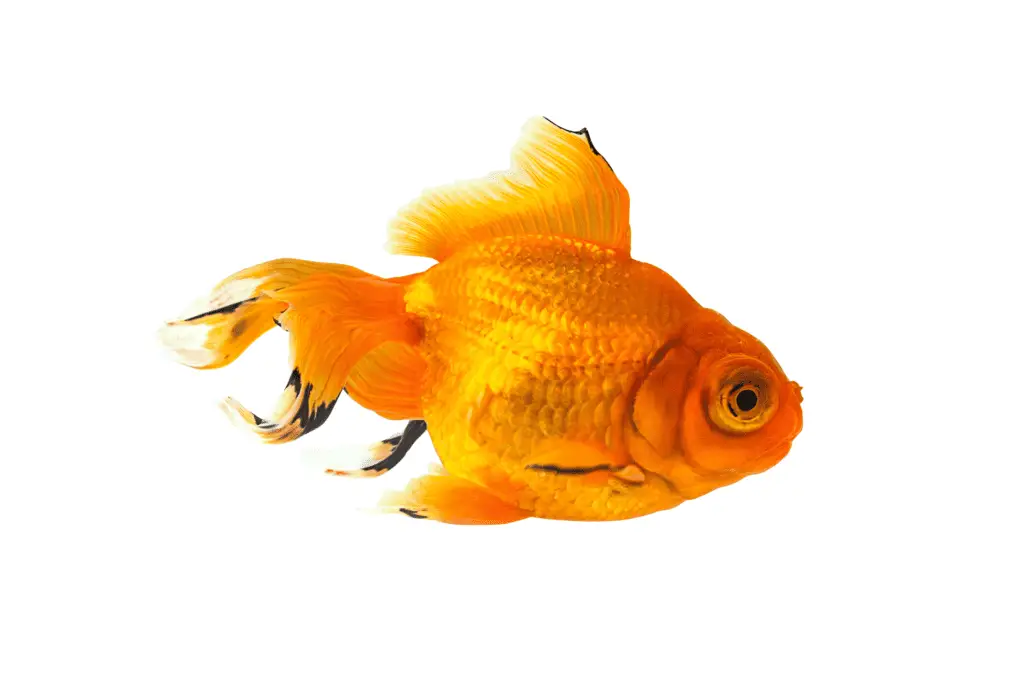
Breeding and Reproduction
Telescope Goldfish, also known as Dragon Eye Goldfish, are a popular variant of Fancy Goldfish. They have distinctive protruding eyes and can have different tail types such as Split Caudal Fin, Veil Tail, Butterfly Tail, and even a Panda pattern.
Breeding Telescope Goldfish is relatively simple, as they belong to the scattered egg reproduction type. The optimal breeding environment requires a separate breeding tank with solid surfaces and elements like spawning mops and plants. A 20-gallon capacity tank is the minimum recommended size for breeding.
When preparing for breeding, it’s important to distinguish between male and female goldfish. Males may have tubercles on their gill covers and pectoral fins, while females will appear rounder when carrying eggs. Raising the water temperature can encourage spawning, while also ensuring that the breeding tank’s water parameters, such as pH and GH, are within acceptable levels.
During the spawning process:
- Males will chase the females around the breeding tank.
- Females can lay up to 1,000 eggs per spawning on the provided surfaces.
- The fertilized eggs will hatch within 5 to 6 days.
- Caring for the fry involves providing an optimal diet and proper water conditions.
To support proper growth and development of the fry, it’s essential to provide a balanced diet consisting of live, frozen, and dried foods. The Panda Telescope Goldfish, like other varieties, can thrive in well-maintained rivers and ponds, adapting to various conditions.
In summary, breeding Telescope Goldfish requires proper preparation, including a suitable breeding tank, distinguishing between males and females, maintaining appropriate water parameters, and providing a healthy diet for the fry.
Selecting and Acquiring Telescope Goldfish
Before purchasing a Telescope Goldfish, it’s essential to consider their unique characteristics and care requirements. These interesting fish are known for their telescoping eyes and distinct appearance, which has drawn comparisons to Black Moor Goldfish and even Prussian Carp. The Telescope Goldfish is available in various colors, including the Black-and-White Panda, and types, such as the elegant Butterfly Telescope Goldfish.
When selecting Telescope Goldfish, pay careful attention to their overall health and vigor. Choose fish with clear eyes, smooth scales, and no visible injuries. A good starting point is to look for reputable fish stores or trustworthy online sellers to ensure that you get healthy specimens.
Typically, the price of Telescope Goldfish ranges from a few dollars for small juvenile fish to higher prices for adults and rare variants. Their growth rates are moderate, with an average final size of around 8 inches when cared for properly.
Taking proper care of Telescope Goldfish involves meeting the following basic requirements:
- Tank Size: A 20-30 gallon tank is necessary for a single fish, with an additional 10 gallons per fish as you add more to the aquarium.
- Water Quality: Goldfish thrive in well-maintained water conditions with stable pH and no rapid temperature fluctuations. Maintain a temperature between 65-72°F and a pH of 6.5-7.5.
- Filtration: A good quality filter is essential to remove waste and ensure water quality. Goldfish produce more waste than other fish, so a powerful filtration system is crucial.
Goldfish are accepted to do well with artificial plants, as they tend to uproot live plants when searching for food. Including decor such as driftwood and ornaments can also enhance your aquarium’s visual appeal.
Once you have acquired your Telescope Goldfish, remember to provide them with a high-quality diet and consider combining them with other calm, visually impaired fish for the best cohabitation experience. This way, you can create a tranquil aquarium environment where your Telescope Goldfish will thrive.
